Alcoholic Narcissist: Relationship Between Alcohol And Narcissism
However, treatments like psychotherapy, group support, and self-care strategies can help people with either condition feel much better. In other words, those who had narcissistic tendencies were more likely to use alcohol and experience problems because of alcohol use. People can misuse alcohol without having AUD or being addicted to alcohol. They might infrequently have bouts of excessive drinking, for example, but find that it doesn’t affect their life and that it’s easy to cut back on alcohol (or to stop drinking entirely).

Outpatient rehab allows patients to recover from a co-occurring disorder while still attending to daily personal and professional responsibilities at home. A comprehensive recovery plan is the safest and most effective way to overcome a co-occurring disorder. These plans incorporate various therapies and aftercare programs that address both alcohol abuse and a mental health condition.
Overlapping tools for diagnosis
Those suffering from psychological abuse by a narcissist assume that this is love and seek ways to cope. Aggressive behavior and pathological narcissism were linked to alcohol overuse covert narcissism and alcoholism in a 2017 study of Canadian men. The association remained intact even when researchers accounted for general psychological distress as a trigger for coping responses like alcohol use.
“Narcissist 2.0”: Summer House fans were disappointed with Lindsay Hubbard being drunk and fighting with Carl Radke – Sportskeeda
“Narcissist 2.0”: Summer House fans were disappointed with Lindsay Hubbard being drunk and fighting with Carl Radke.
Posted: Tue, 25 Apr 2023 07:00:00 GMT [source]
There are several actions that could trigger this block including submitting a certain word or phrase, a SQL command or malformed data. All Addiction Resource content is medically reviewed or fact checked to ensure as much factual accuracy as possible. Kristy Lee Parkin is a licensed funeral director, certified life coach, and adjunct faculty member at Syracuse University. The number of criteria a person meets determines whether they have AUD, and if so, the severity of the condition. Kari Rusnak, MA, LPC, is a licensed couples counselor with a multistate telehealth practice. Our experts continually monitor the health and wellness space, and we update our articles when new information becomes available.
Understanding the Alcoholic Narcissist
With any mental health condition, the outlook is almost invariably better if you are treated than not treated. For AUD to be diagnosed, a person must meet one of four possible criteria for alcohol abuse, three of seven possible criteria for alcohol dependence, and two of 12 possible criteria for AUD symptoms. Licensed Clinical Professional Counselor who has been providing mental health services for over 10 years.
- Based on existing research, we can’t say that alcoholism causes a personality disorder like narcissism.
- Negative and disrupted attachment, neglect and maltreatment, high-conflict divorce, and abuse are examples of traumatic cycles during childhood.
- Both are mental health conditions that can damage relationships, cause personal distress, and undermine a person’s quality of life and sense of well-being.
- The altered state of mind induced by alcohol can further impair empathy, increase self-centeredness, and intensify manipulative tendencies.
- After the withdrawal stage, you could seek inpatient or outpatient care depending on your needs and the services offered by the facilities that are available to you.
- The current study explored the relationship between narcissism and alcohol use, alcohol-related problems, problem recognition, evaluation, and problem expectancies in a college population.
It seems that many people who have NPD might also have AUD, but it’s not clear why. It’s worth noting that the DSM-5-TR doesn’t use the term “alcoholism,” but the term is still used colloquially to refer to AUD. In order to get a diagnosis of AUD, you have to fit certain diagnostic criteria as set out in the Diagnostic and Statistical Manual of Mental Disorders, 5th edition, Text Revision (DSM-5-TR). Before we go further, it’s important to understand the terminology used in this article.




